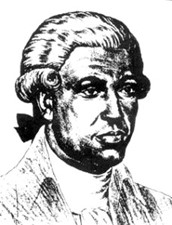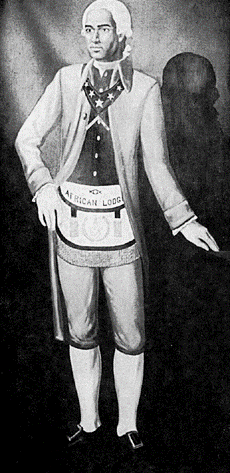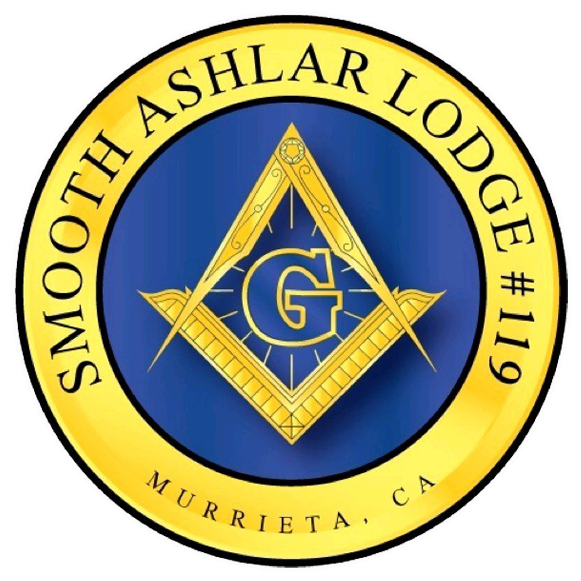Freemasonry among Black men began during the War of Independence, when Prince Hall and fourteen other free black men were initiated into Lodge # 441, Irish Constitution, attached to the 38th Regiment of Foot, British Army Garrisoned at Castle Williams (now Fort Independence) Boston Harbor on March 6, 1775. The Master of the Lodge was Sergeant John Batt. Along with Prince Hall, the other newly made masons were Cyrus Johnson, Bueston Slinger, Prince Rees, John Canton, Peter Freeman, Benjamin Tiler, Duff Ruform, Thomas Santerson, Prince Rayden, Cato Spain, Boston Smith, Peter Best, Forten Howard and Richard Titley.
When the British Army left Boston, this Lodge, # 441, granted Prince Hall and his brethren authority to meet as a lodge, to go in procession on Saints John Day, and as a Lodge to bury their dead; but they could not confer degrees nor perform any other Masonic “work”. For nine years these brethren, together with others who had received their degrees elsewhere, assembled and enjoyed their limited privileges as Masons. Finally in March 2, 1784, Prince Hall petitioned the Grand Lodge of England, through a Worshipful Master of a subordinate Lodge in London (William Moody of Brotherly Love Lodge # 55) for a warrant or charter.
Upon his death, Nero Prince became Grand Master. When Nero Prince sailed to Russia in 1808, George Middleton succeeded him. After Middleton, Petrert Lew, Samuel H. Moody and then, John T. Hilton became Grand Master. In 1827, it was Hilton who recommended a Declaration of Independence from the English Grand Lodge.
In 1869 a fire destroyed Massachusetts’ Grand Lodge headquarters and a number of its priceless records. The charter in its metal tube was in the Grand Lodge chest. The tube saved the charter from the flames, but the intense heat charred the paper. It was at this time that Grand Master S.T. Kendall crawled into the burning building and in peril of his life, saved the charter from complete destruction. Thus, a Grand Master’s devotion and heroism further consecrated this parchment to us, and added a further detail to its already interesting history. The original Charter # 459 has long since been made secure between heavy plate glass and is kept in a fire-proof vault in a downtown Boston bank.
In 1946, the Grand Lodge of England again extended recognition to the Prince Hall Grand Lodge but withdrew it the same year. In 1994, the Grand Lodge of England finally accepted a petition for recognition by Prince Hall Grand Lodge of Massachusetts. “England cited several reasons recognition was withheld,” Nicholas B. Locker, Grand Master of Prince Hall from 1992-1994, said in an interview in June 1996. “One was ‘territorial boundaries,’ because the Grand Lodge of England had already recognized the white Grand Lodge of Massachusetts, which shared the same jurisdiction with us. “Another factor was that Prince Hall owed back payment of dues to the Grand Lodge. Back 200 years ago, there were no checks, and often dues for England were put in the hands of sailing ship captains. It was several months before the ships arrived in England, and money was lost. So, it wasn’t possible to say for sure that Prince Hall paid all his dues."
The ties were arranged to be formalized in June 1996. In its 212 years, the Prince Hall Grand Lodge has spawned over 44 other Grand Lodges. The subordinate lodges receive recognition once their grand lodges are recognized.
Prince Hall is buried in a cemetery overlooking the Charlestown naval yard in Boston’s north end. His grave is situated near a large tree, his wife’s grave is directly behind his.


